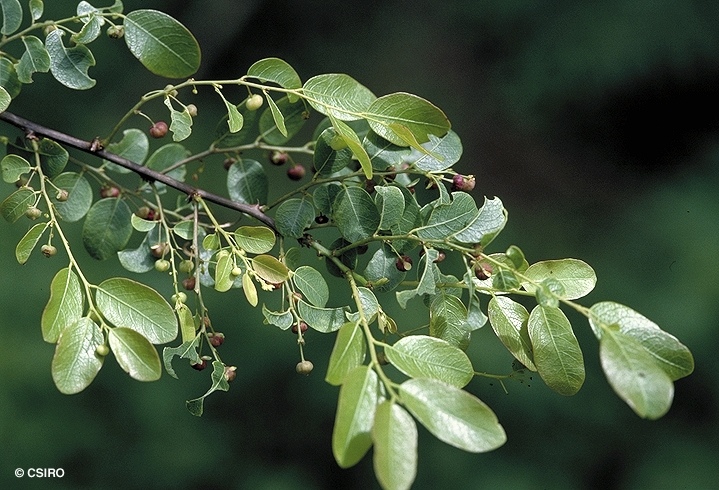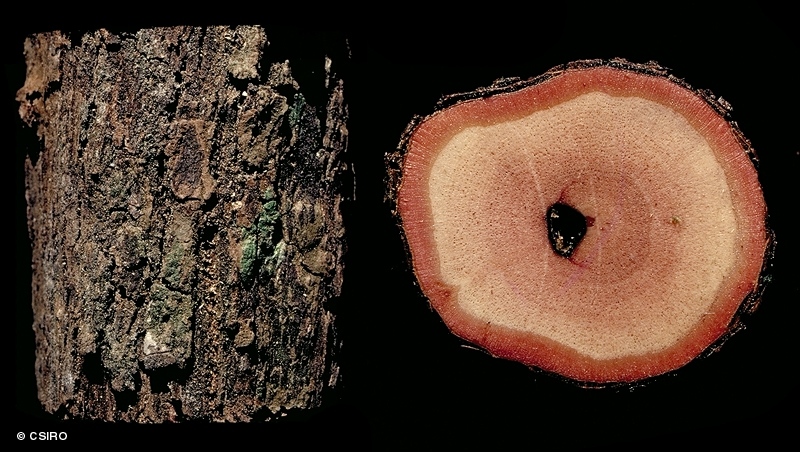Australian Tropical Rainforest Plants - Online edition
Phyllanthus novae-hollandiae Mull.Arg.






Mueller Argoviensis, J. (1866) Prodromus 15: 346. Type: In Nova Hollandia orient. tropica ad Edgecombe-Bay (Ferd. Muell.! in hb. DC.).
Phyllanthus
Can grow into a tree-top vine but often flowers and fruits as a shrub about 2-3 m tall. Vine stem diameters to 9 cm recorded.
Leaf blades about 0.8-6.5 x 0.6-3 cm, produced on lateral shoots which resemble compound leaves. Leaves tend to be alternate and not spirally arranged on the twigs. Petioles about 0.5-5 mm long, slightly swollen and transversely wrinkled. Venation not always obvious. Stipules linear or narrowly triangular, about 1-2 mm long, margins minutely toothed.
Flowers about 3-4 mm diam. on slender pedicels about 3-5 mm long.
Cotyledons obovate, about 4-6 x 2-3 mm. First pair of leaves rather similar to the cotyledons. At the tenth leaf stage: leaves arranged on short shoots which resemble compound leaves and the individual leaves resemble leaflets. Leaf blade about 7-9 x 3-4 mm, glaucous on the underside. Stipules filiform, less than 1 mm long. Seed germination time 25 to 31 days.
Occurs in CYP, NEQ and CEQ. Altitudinal range from near sea level to 500 m. Usually grows in gallery forest, monsoon forest or vine thickets but also found in open forest. Also occurs in New Guinea.





